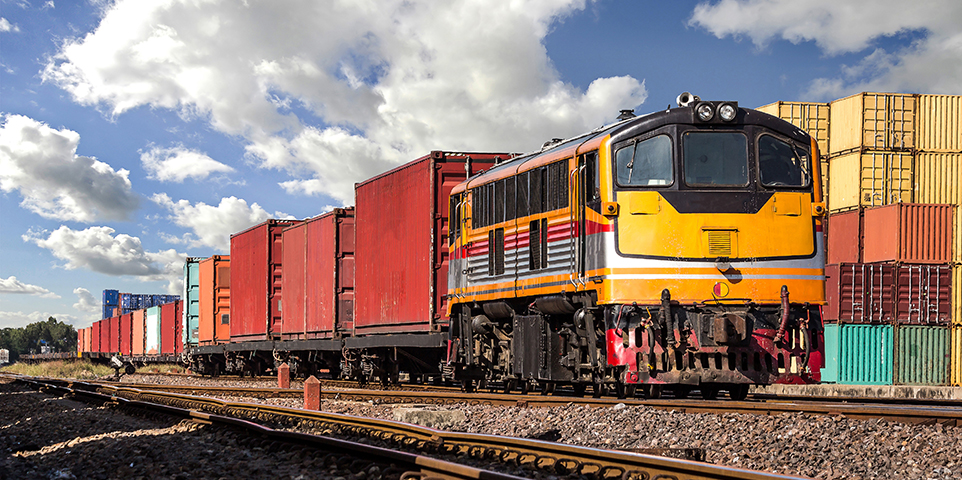MEMBERSHIP
AMPLIFY
EN ESPAÑOL
Connect With Us
- Popular search terms
- Automobile
- Home + Renters
- Claims
- Fraud
- Hurricane
- Popular Topics
- Automobile
- Home + Renters
- The Basics
- Disaster + Preparation
- Life Insurance

Railroads are becoming an important method of shipping oil long distances, and a recent series of accidents has drawn attention to rail liability insurance issues.
Until the recent shale oil boom, virtually all oil was shipped from production to refinery via pipeline. But shale oil—particularly in North Dakota’s Bakken Shale region—lacks enough pipeline to handle all the oil produced.
Oil producers have turned to railroads. According to the Association of American Railroads, Class I railroads (the largest carriers) originated around 400,000 carloads of crude last year, more than 40 times as many as in 2008. That represents around 11 percent of U.S. crude oil production.
That volume is likely to increase. Some producers have come to like the flexibility rail shipments gives them. It lets them ship anywhere in the country, to refineries paying the highest price, rather than being limited to the refineries near the pipeline’s terminus.
Most large freight shipments involve a large number of companies in a web of arrangements. The rail operator typically owns the engine and the track. It may own some of the transport cars, or it may be transporting cars owned by other rail operators. The freight, of course, is owned by the shipper or the company receiving it. Sometimes shippers own the cars that carry their goods.
Though spills have always been rare, they have always happened—whether by rail or pipeline. But Bakken crude is more volatile than other varieties. A recent analysis of the crude at the site of the July Lac Megantic explosion indicated the oil was as explosive as gasoline.
If there is a derailment, the operator is typically responsible for damages, both to the freight and to any injuries or property damage, according to Daniel Bancroft, New York-based senior vice president and transportation practice leader with Willis North America. Railroads are not required to purchase insurance, but most do. Rail liability is sold primarily in excess and surplus lines and has five main coverages:
Pollution is covered. Terrorism is also typically covered, which has caused some concern, as some experts fear the accumulation of explosive materials in difficult-to-protect locations will tempt terrorists, especially near cities.
The largest railroads, Class I's, retain much of their casualty risk—in the tens of millions of dollars. For protection against the largest losses, they typically purchase the insurance market capacity of liability limits of $1.5 billion. Regional, Class II, railroads typically purchase liability limits of $25 million to $100 million, with a retention between $250,000 and $500,000. The smallest railroads, Class III short lines that sometimes operate on just a few miles of track, might have a minimum of a $5 million limit with retentions in the tens of thousands.
The vast majority of shipments arrive safely, and rail operators contend their shipments spill less fuel than pipelines. But on July 6, 2013, a train of more than 70 tankers of Bakken crude derailed and exploded, obliterating the Canadian town of Lac Megantic, Quebec. The tragedy killed 47 people—the deadliest Canadian rail accident in nearly 150 years.
More than 100 homes and businesses were destroyed, including the town library. Cleanup costs may hit $200 million, one Lac Megantic city councilman told The Wall Street Journal.
Other accidents have been less catastrophic. The Associated Press tallied 10 derailments since 2008 that spilled “significant quantities of crude.” The Association of American Railroads, citing U.S. Department of Transportation data, counted 39 spills of more than five gallons between 2002 and 2012.
In the United States late last year, trains in Alabama and North Dakota carrying crude derailed and exploded. No injuries were reported.
The operator must carry any cargo brought to it, provided it is packaged and labeled according to federal regulations. Crude oil is typically carried in a DOT-111, a general rail car that handles many liquids—though shippers do not use a car to carry fuel oil on one trip, then, say, corn syrup on the next. Some railroad executives have called for a tighter requirement: using a DOT-111 tricked out to minimize spills and explosions.
The Wall Street Journal reported that about 272,100 DOT-111s operate in North America, according to the Railway Supply Institute, a trade association. Of these, about 39,000 carry crude oil. Less than one-third meet the stricter guidelines, which are voluntary.
Federal officials have also recommended tightening handling requirements.